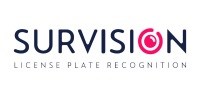Survision: What Is License Plate Inventory (LPI)
Unlocking the Future of License Plate Recognition

In the fast-paced world of technology and data-driven solutions, License Plate Inventory (LPI), is emerging as a game-changer for Parking operators and authorities. LPI utilizes License Plate Recognition (LPR) technology to streamline various processes, solving many challenges across different industries.
What is License Plate Inventory?
License Plate Inventory is a feature of LPR-based systems that consists of a digital inventory of license plate numbers (LPN), enabling operators to efficiently monitor, retrieve, group search and filter the LPN data or integrate it with other vehicle control systems. It's like having a digital Rolodex of license plates accessible at your fingertips.
LPI is designed to handle a wide range of tasks, from identifying stolen vehicles and managing parking lots to enhancing security and improving traffic management.
LPI is a versatile tool that combines cutting-edge technology with solutions to real-world problems.
LPI is also part of the “License Plating” logistics method used in storages and containers to organize objects by assigning each unit (pallet, box, truck, container or product) an internal license plate number and having OCR-capable cameras to track them across the facility; of course, once you can mark every unit with a license plate number, the LPI process is basically the same, whether it is vehicles or boxes.
Although there are many similarities in processes and technology, we will (conveniently) focus on vehicle-related LPI.
Vehicle LPN data is being used in increasingly more scenarios, such as parking, security, stolen vehicle location, surveillance, etc. Operators are currently trying different fixed and mobile LPR method combinations to create more complex vehicle monitoring systems that allow more intelligent operations and services.
How Does LPI Work?
LPI consists of using mobile LPR (MLPI) to systematically scan license plates across the facility to feed the vehicle control system with useful information: vehicle location.

Knowing the location of every vehicle in the facility creates a range of possibilities regarding reports and alerts; this is a game-changer in security, management and customer service matters.
You can have LPI as a standalone tool to create a License Plate Database or as a complement to a more complex vehicle control system with fixed LPR cameras at the gates.

What Challenges Can LPR/LPI Help Solve?
As a Standalone solution, an LPI-based system can help any vehicle-related operation by providing a searchable list of all the license plates on a premise, which helps in knowing the number of vehicles
The real power comes when integrating LPI data with other systems:
- LPI data can help access control systems to link users with their vehicles and perform a great number of operations with that valuable information
- Via integration with security forces systems, LPI is key to detecting stolen or wanted vehicles
- LPI can help surveillance systems by giving accurate information on vehicles' location
- Vehicle-related frauds become harder to pull out if LPI-based surveillance is on.
As a complement to fixed LPR systems, LPI allows Parking Management systems to extend their monitoring capabilities beyond the gates to the entire premise, improving the system’s whole accuracy:
- Improved readings error handling
- Missing vehicles detection
- Real-time occupancy reports

The Tech Behind the Magic: What Technologies are Used for Achieving LPI?
LPI relies on a combination of cutting-edge technologies:
License Plate Recognition (LPR): LPR technology is at the core of LPI. It uses optical character recognition (OCR) and machine learning algorithms to accurately read and interpret license plates.
Specialized LPR Cameras: LPI systems require high-quality cameras to capture clear images of license plates, even in challenging conditions like low light or bad weather.

New generation ultra-lightweight, all-included LPR cameras make it possible to turn any vehicle in a mobile LPR unit
Database Management: A robust software is essential for efficiently storing and organizing license plate data. Modern databases use cloud technology for scalability and accessibility.
AI and Machine Learning: LPR/LPI systems often incorporate AI and machine learning to improve accuracy in recognizing license plates and identifying patterns.
Gazing into the Crystal Ball: What is the Expected Projection of LPI Applications for the Future?
The future of LPI is incredibly promising. Here's a sneak peek into what we can expect:
Autonomous Vehicles: As self-driving cars become more prevalent, LPI will play a vital role in tracking and identifying these vehicles on the road.
Environmental Initiatives: LPI can assist in enforcing regulations related to emissions and pollution by monitoring vehicle movements and emissions.
Personalized Services: Businesses will leverage LPI data to offer personalized services, from customized marketing campaigns to tailored parking experiences.
LPR-powered License Plate Inventory is a multifaceted solution that addresses real-world challenges across various industries. With advancements in technology and an ever-expanding scope of applications, LPR/LPI is poised to shape the future of data-driven decision-making and offer innovative solutions. So, buckle up! because the license plate revolution is just getting started!
About SURVISION 
SURVISION is a global leader in License Plate Reading (LPR). Since 2001, with solutions being deployed in over 50 countries with more than 50,000 cameras thanks to a network of 900 Value Added Integrators. The quality of its R&D team allows SURVISION to work with world-class integrators for a complete set of innovative solutions for Smart-City, Smart-Parking, law enforcement, toll road collection, car-park management, and for local authorities.









Comments
There are no comments yet for this item
Join the discussion